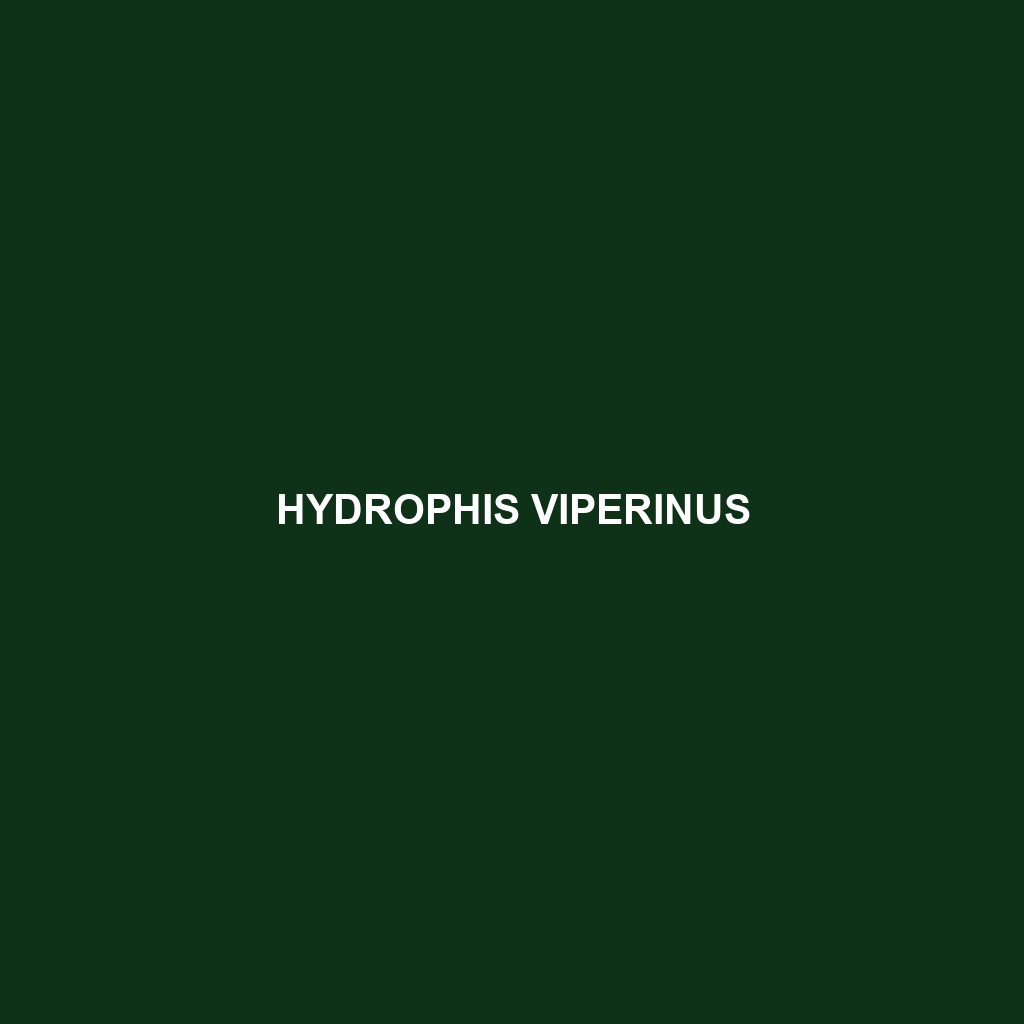Common Name
Hydrophis viperinus
Scientific Name
Hydrophis viperinus
Habitat
Hydrophis viperinus, also known as the Yarned Sea Snake, primarily occurs in marine habitats across the Indo-Pacific region. This species can be found in warm coastal waters, typically along coral reefs, estuaries, and shallow lagoons. The preferred climate is tropical to subtropical, characterized by warm temperatures and high salinity levels. These snakes inhabit regions where they can easily access both marine environments and coastal areas, utilizing their exceptional swimming abilities to navigate through intricate environments such as mangrove forests and sandy bays. Therefore, the conservation of healthy marine ecosystems, particularly coral reefs, is vital for the continued survival of Hydrophis viperinus.
Physical Characteristics
Hydrophis viperinus exhibits remarkable physical characteristics that make it distinguishable. Adult sea snakes generally measure between 1.5 to 2.5 meters in length, with some exceptional individuals reported to reach lengths of up to 3 meters. Their bodies are elongated and flattened laterally, which aids in swimming. The coloration of Hydrophis viperinus is typically a pattern of light and dark patches, which can vary from grayish to brown hues. This coloration serves as camouflage against the sandy sea bed, allowing it to evade predators. One unique feature is its paddle-shaped tail, which enhances its swimming efficiency in the water. Overall, the combination of size, coloration, and body shape makes Hydrophis viperinus an excellent swimmer, adapted to life in the ocean.
Behavior
Behaviorally, Hydrophis viperinus is predominantly diurnal and exhibits a mix of solitary and social behaviors. These snakes are often observed basking on rocks or sandy beaches to regulate their body temperature. During the mating season, which typically occurs between the late spring and early summer, males may engage in combat rituals, curling around each other to establish dominance. The species is known for its strong swimming skills, often migrating between feeding areas and breeding grounds. While they are generally not aggressive, they are capable of delivering venomous bites if threatened. Nocturnal behavior has also been noted in certain populations, particularly in areas with significant daytime disturbances, allowing them to hunt and forage more effectively during the night.
Diet
Hydrophis viperinus is primarily a carnivorous predator, feeding on a variety of marine organisms. Its diet mainly consists of fish and eels, which it captures using its specialized venomous fangs. The venom of Hydrophis viperinus is potent, allowing it to immobilize prey quickly. This snake is known to have a unique feeding pattern that involves significant foraging in coral reefs and sandy bottoms, using its keen eyesight to spot prey from a distance. Unlike some other sea snakes that might have adaptations for more specialized diets, Hydrophis viperinus exhibits a flexible feeding strategy, preying on the most readily available species, which makes it a generalist within its environment.
Reproduction
The reproductive cycle of Hydrophis viperinus involves ovoviviparous reproduction, meaning that the young develop inside eggs that remain in the mother’s body until they hatch. Mating occurs during the warmer months and gestation lasts approximately six to eight months, resulting in the birth of live young. Females can give birth to anywhere from 4 to 10 offspring at a time, with each newborn measuring about 30 cm in length. Parental care in this species is minimal, as the young are independent from birth. Their ability to swim and hunt makes them well-equipped for survival immediately after birth, though they face numerous challenges from predators in their early stages of life.
Conservation Status
According to the International Union for Conservation of Nature (IUCN), Hydrophis viperinus is currently classified as ‘Least Concern,’ indicating that it is not presently facing significant threats to its population. However, this classification does not diminish the importance of conservation efforts, as habitat degradation, particularly in coral reef ecosystems, poses risks to its future. Conservation challenges include pollution, climate change affecting marine habitats, and overfishing of prey species. Awareness and protection of marine environments are crucial for maintaining stable populations of Hydrophis viperinus in their natural habitats.
Interesting Facts
There are several fascinating facts about Hydrophis viperinus that highlight its unique adaptations. One noteworthy aspect is its ability to absorb oxygen through its skin, which allows it to remain submerged for extended periods without surfacing for air. Additionally, this species possesses a remarkable resistance to marine venoms, enabling it to coexist with various marine life that may be venomous. Interestingly, Hydrophis viperinus can also tolerate varying salinity levels, which increases its adaptability to different marine environments.
Role in Ecosystem
Hydrophis viperinus plays a crucial role in maintaining the health of marine ecosystems. As a predator, it helps regulate fish populations, thus contributing to balanced aquatic food webs. By controlling prey populations, Hydrophis viperinus aids in the prevention of overgrazing of marine vegetation, which is essential for the health of coral reefs. Furthermore, as part of its ecosystem, the snake can also serve as a food source for larger marine predators, illustrating its integral position within the marine environment. Overall, the presence of Hydrophis viperinus indicates a well-functioning, biodiverse ecosystem.
